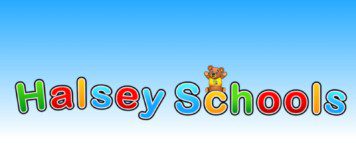What is Self-Talk?
Self‐Talk is a strategy where mommies and daddies like you describe what you are doing as you’re doing it. You provide the words to describe your actions, without expecting your child to respond. You should use Self-Talk daily with your children. All infants, toddlers, and preschoolers will benefit. Self-talking is a great way to help your infants & toddlers develop vocabulary
Examples of Self‐Talk:
- I’m mixing the butter and sugar to make our cookies. I like to smell it. Now I’m going to taste it.
- I’m putting on my shoes to get ready for work.
- I’m sitting down at the table next to your sister. I want to see what she is doing with the play doh.
- Now I am writing a ‘W.’ I start here and go down, up, down, and up again. There‐‐‐a ‘W’.
- I am digging in the sand with Monique. Deeper…deeper…deeper. Oh no‐‐‐the sand is starting to cave in!
What is Parallel Talk?
Parallel Talk is a technique in which mommies and daddies like you describe what your child is doing or seeing. When you use Parallel Talk, you’re acting like a broadcaster. You watch the action and describe it to your child, without expecting a response. You shouldn’t ask your child questions during parallel talk. Parallel Talk also called: information talk, narratives, commentary, and broadcasting.
Examples of Parallel Talk:
- If your child is playing with colored blocks, you might say: Oh, you put the yellow block on top. Now you’re sliding the green one next to the long red block. The tower is getting taller.
- If your child is playing with Sesame Street characters, you might say: Here comes Oscar the Grouch. He’s riding in the car with Cookie Monster. Cookie Monster’s in the back. He’s looking around while the car goes faster and faster.
- If your child is upset because you won’t buy the toy. You might say: Cindy, you really want that toy. You are feeling sad that we are not buying it. You wish you could have it.
Self Talk and Parallel Talk help parents and their children develop relationships.
The strategies of Self Talk and Parallel Talk give you a starting place, something to talk about as you make comments on your child’s actions and follow your child’s lead. If your child is upset, Parallel Talk helps him to feel respected and validated. If your child is engaged in play, she enjoys the time and attention.
Self Talk and Parallel Talk help children who are shy or have limited language.
Self Talk and Parallel Talk are a good way to begin talking with any young child, at any time. The child has the opportunity to develop receptive language, but there is no expectation that the child will respond. These techniques can be especially effective with non‐verbal children, with children who are shy, and with English language learners. It builds language for all children.
Parents often feel self‐conscious or awkward when they begin to use Self Talk and Parallel Talk.
To use Self Talk and Parallel Talk you’ll learn to talk in a new way‐‐‐describing, not questioning. But speaking is only part of it. Observing your child’s action carefully is the key.
Beginners using Self Talk and Parallel Talk often overwhelm children with too much description.
In the beginning, it’s easy to concentrate so hard on becoming a good describer that the natural pace and flow of conversation is overlooked. You don’t need to comment on every single action. Commenting on every second or third action creates a more natural conversational pace and gives your child a chance to respond, if he chooses.
Adapted from Preschool for All, San Francisco First Five (first5sf.org)
- Happy Times November 2024 - October 29, 2024
- Ms. Tiffany - September 27, 2024
- Happy Times October 2024 - September 27, 2024





